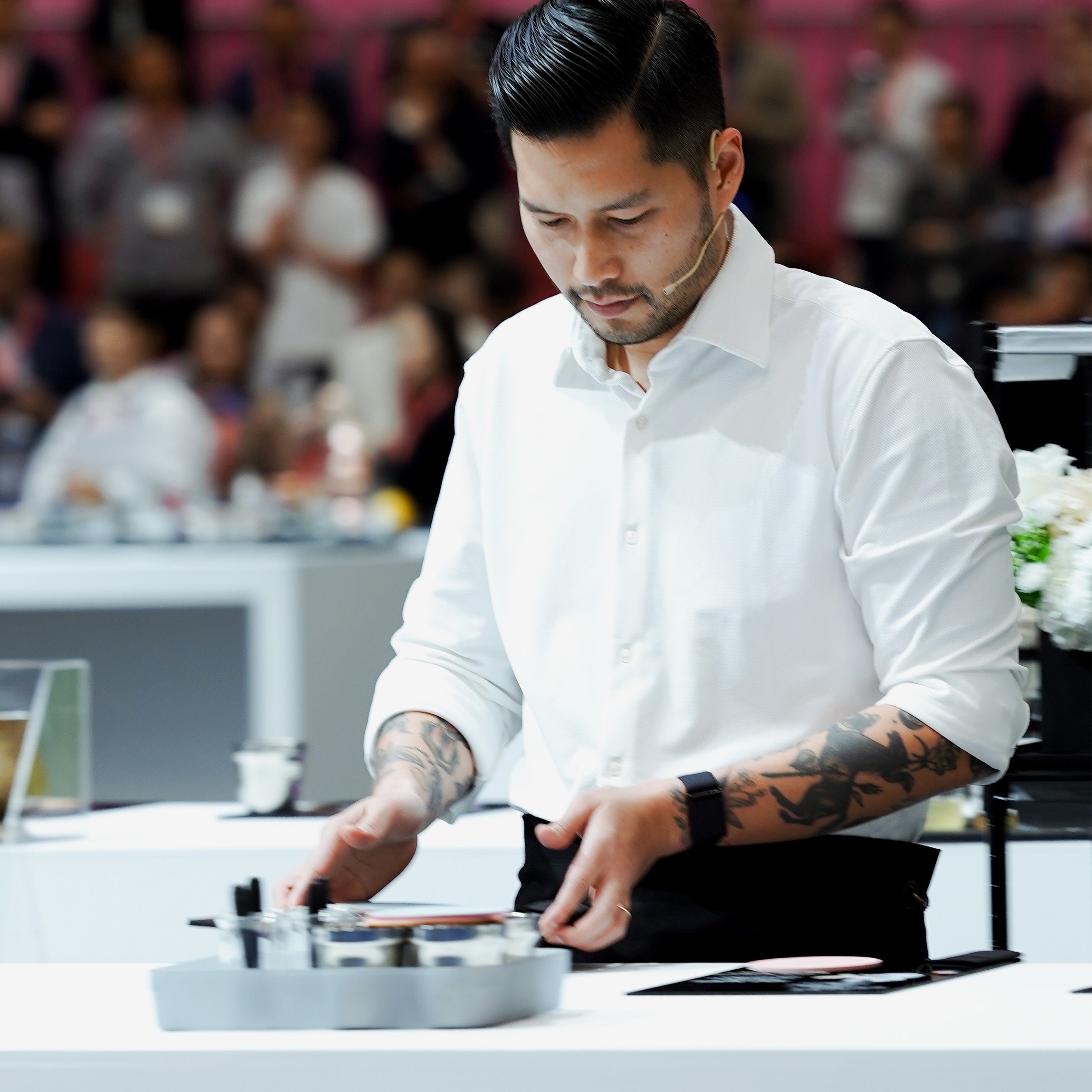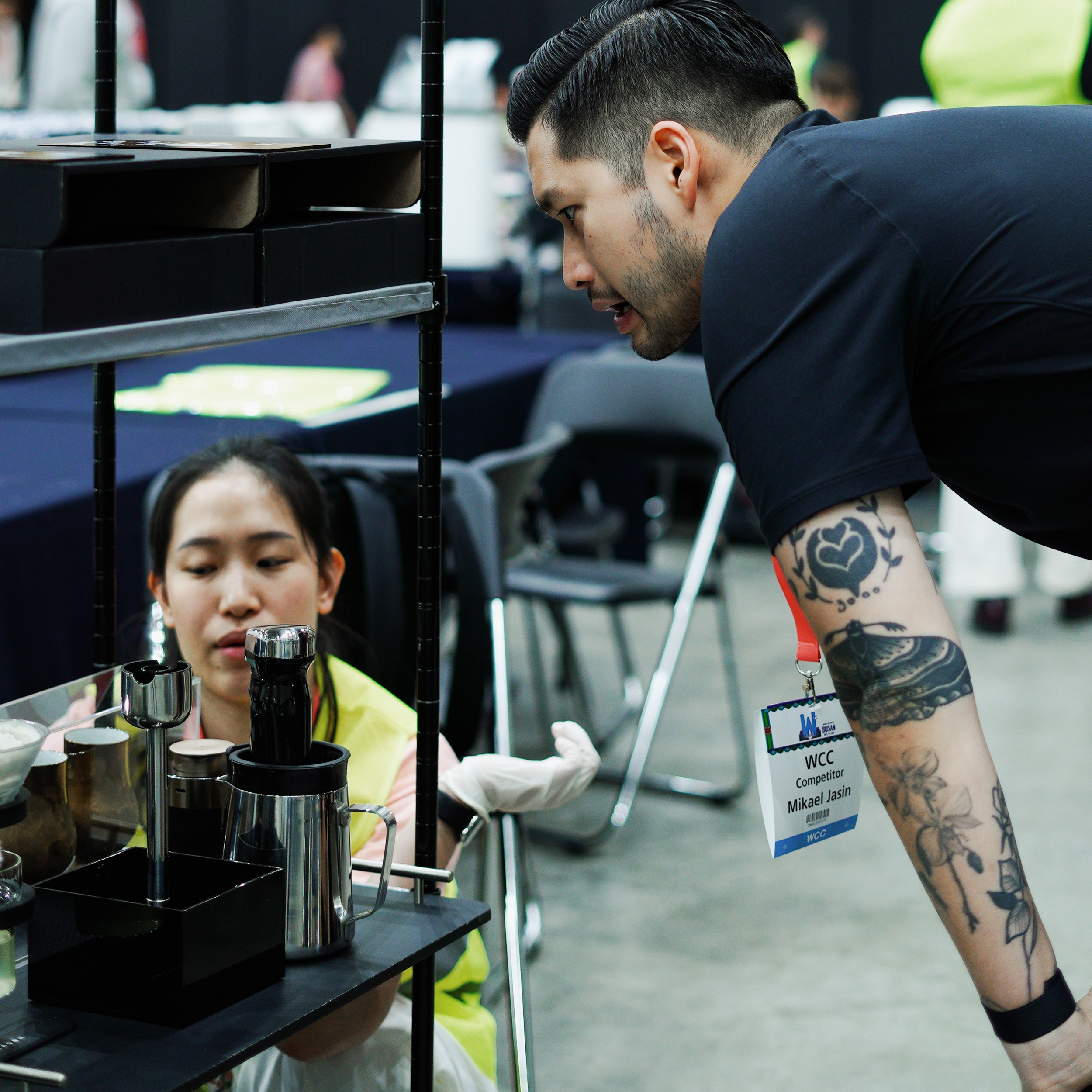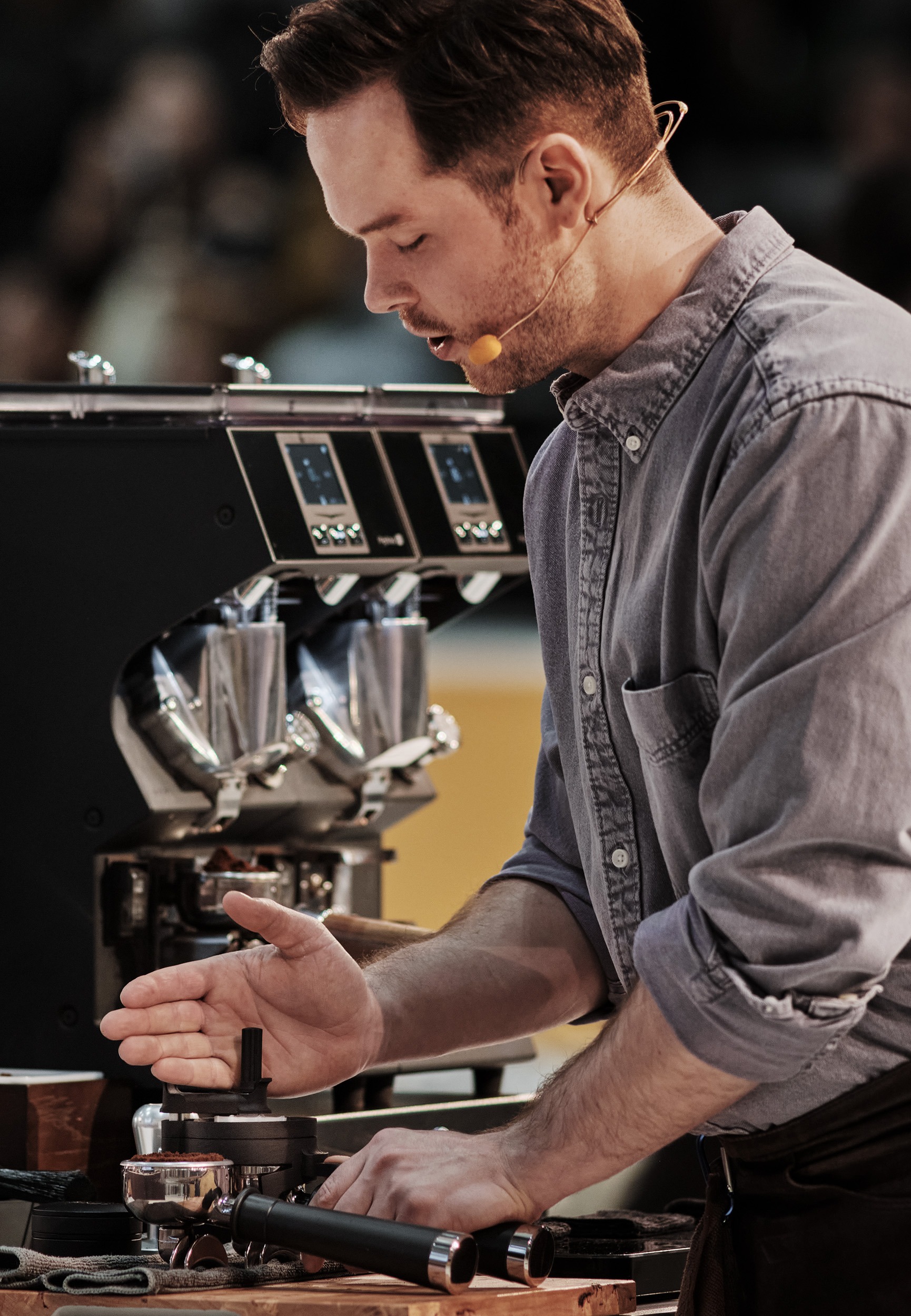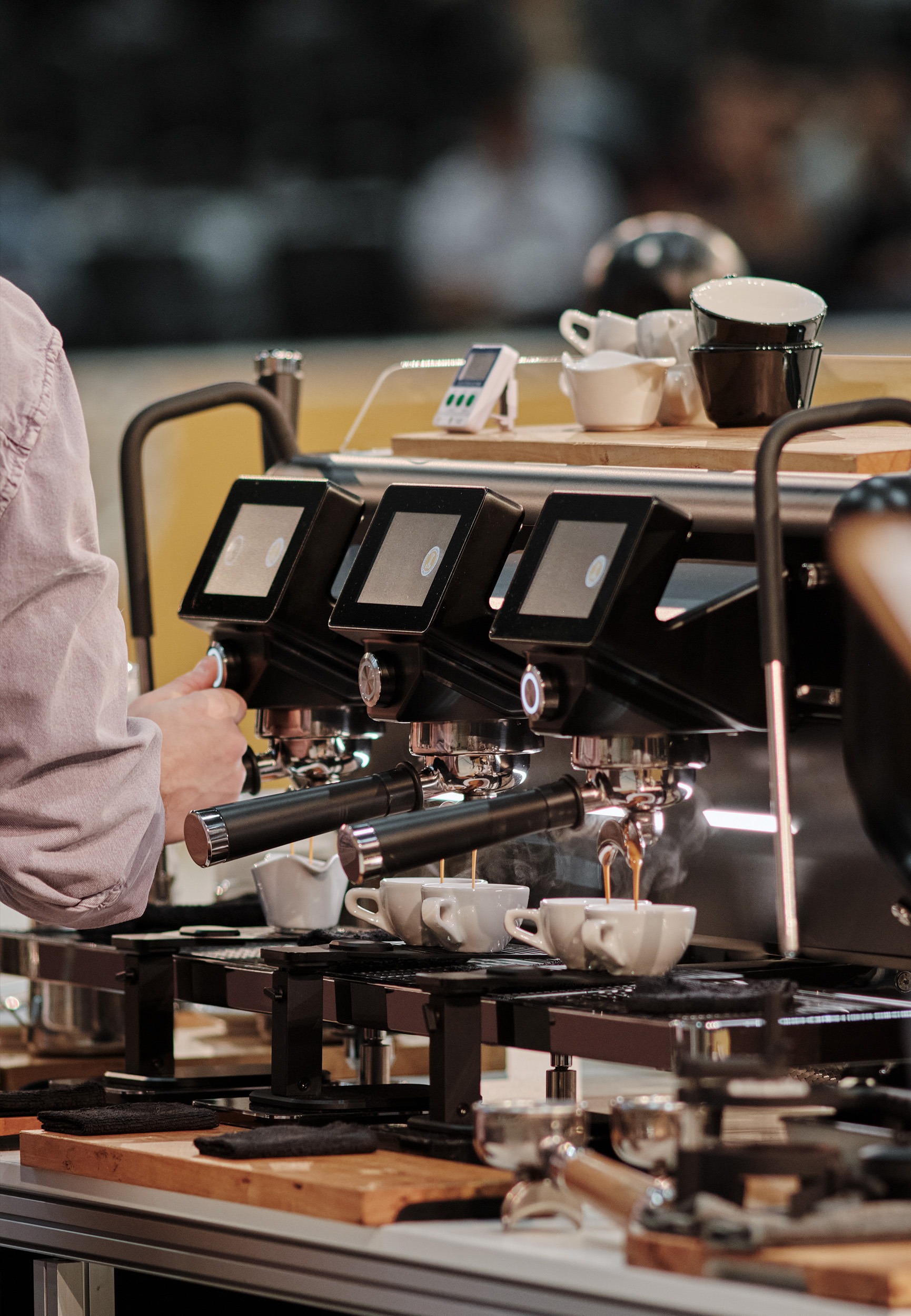It’s debatable who invented the triple ristretto, but if Paul Bassett didn’t invent it, he certainly made it famous. Here’s how the story goes: Paul was representing Australia in the 2003 World Barista Championships and narrowly missed out on getting into the finals. Upon close inspection, Toby Smith (the guy who started Toby’s Estate, and the head of ASCA at the time) noticed that points were deducted on his scoresheet because the technical judges (there used to be two) could see the impression of the screw that holds in the shower screen on the spent coffee puck, and this could only mean that Paul had dosed too much coffee!! But Toby and Paul were like — ‘define too much’ and so they made an appeal. There was certainly no mention of overdosing in the rules, then or now.
Toby tells us they actually talked the judges into sitting a blind taste test to determine if a shot that showed the impression of the screw on the puck tasted worse than an ordinary shot. After that, the judges rescinded the points deduction. Paul slid into the finals, rocked four very strong up-dosed triple ristrettos for the judges and became the World Barista Champion. You will notice a few interesting things if you watch the video of his comp. Firstly, his dose is so high, his tamper can barely fit inside the filter basket. Mind you, the baskets would have been pretty shallow back then — there was no such thing as a 24-g basket in 2003. Secondly, the head judge is actually asking questions throughout his routine. That must have been a little distracting!! Thirdly, the legendary Sonja Bjork Grant is one of the sensory judges (she’s the Icelandic coffee roaster who started the WBC.)
 Please note: If you see the screw or shower screen indentation on a spent puck, it doesn’t necessarily mean the screw was touching the coffee during extraction. When you switch a shot off and the pressure evacuates upwards through the showscreen and out through the solenoid at the back of the group. So the puck can expand upwards towards the showerscreen after the pressure is released, even when you aren’t doing a massive dose.
Please note: If you see the screw or shower screen indentation on a spent puck, it doesn’t necessarily mean the screw was touching the coffee during extraction. When you switch a shot off and the pressure evacuates upwards through the showscreen and out through the solenoid at the back of the group. So the puck can expand upwards towards the showerscreen after the pressure is released, even when you aren’t doing a massive dose.
The fashion for espresso roasts in 2003 was to roast fairly dark, and so, espressos prepared using traditional normale recipes tended to have very little acidity. Unfortunately, some roasters really went overboard in that period trying to imitate Starbucks. Plus, specialty coffee was generally quite a lot cheaper than it is today too, so when you wanted some extra acidity in your cup, baristas usually up-dosed. It wasn’t long before a triple ristretto trend swept across the third wave.
Refractometry was not really accessible to baristas in 2003, and scales were rarely used — certainly not for every shot. (The first time I ever saw someone doing that was Jessy Fay at Prufrock in 2010) so we can only guess at the strength of Paul’s shots. But if I had to estimate the extraction yield (EY) of Paul’s competition espresso, I’d say it wouldn’t have been higher than about 15–16 percent. It would have had a huge amount of body, been rich, spicy, and at the time, no one would have had anything like that level of strength in a shot. It was a great historical turning point for espresso making — even if it could have stripped the enamel off your teeth.
Espresso in 2024
Now take a look at the way Mikael Jasin, the new World Barista Champion from So So Good in Indonesia, is making coffee in 2024. For his WBC espresso course, Mikael put a LOT more water through his shots than Paul did back in the day. Mikael prepared his Finca Deborah washed gesha shots on a 1:2.5 ratio. So with a 21-gram dose, he pulled 52 grams (split between two judges).
Mikael Jasin preparing to compete in the 2024 WBC in Busan, South Korea
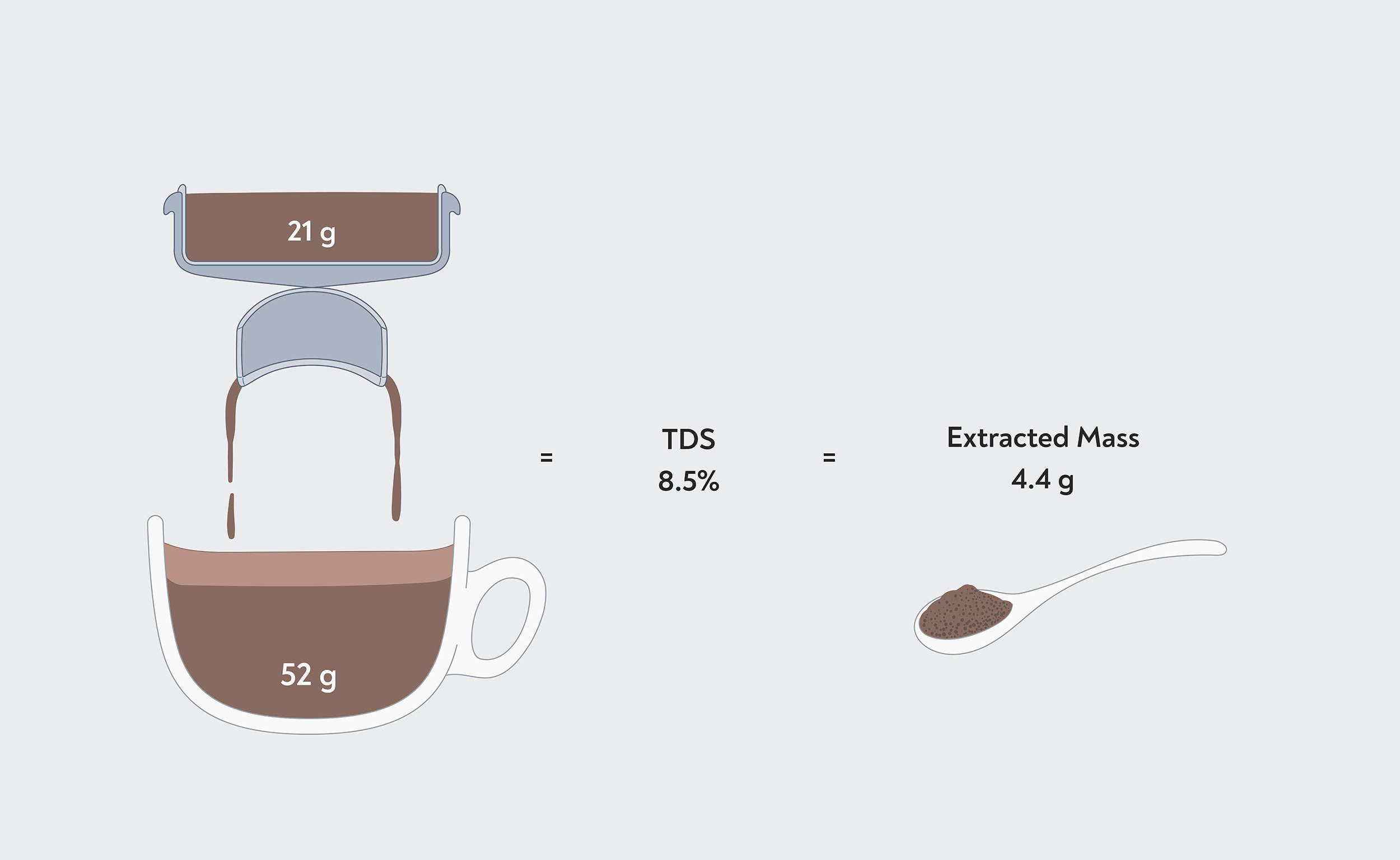 WBC 2024 winning recipe with our estimated TDS reading.
WBC 2024 winning recipe with our estimated TDS reading.
If you are new to measuring extraction in espresso making, here’s a handy tip. Try to visualise ‘the extracted mass’ of a coffee; i.e. the actual weight of what you dissolve out of your grinds. It’s dissolved in the cup but try to imagine it like a little pile of instant coffee sitting on a teaspoon. If, for example, you measure the TDS of your coffee and it comes to 8.5% — that’s about what Mikael was aiming for — and your beverage weight for a double was 52 grams — same as Mikael’s — then your ‘extracted mass’ is 4.4 grams. Easy right? 4.4 is 8.5% of 52. And in the WBC they split that into two separate cups so Mikael was giving each judge 2.2g of dissolved coffee extract. Head baristas need to know this stuff because you can potentially save money when designing recipes, by extracting more and dosing less, whilst delivering your customers exactly the same amount of extracted mass.
On the other hand, if you’re pulling a Paul Bassett-inspired triple ristretto using 21 grams of coffee, and you’re only getting 30 grams out with a TSD of say, 11 percent (Very Strong), your extracted mass will be 3.3g. (1.15 grams per espresso). For all Paul’s exuberance and generosity with the dosing, he was likely serving ~33% less dissolved coffee solid to each judge than Mikael. That discrepancy is not so important in a competition where the judges only take two sips of each beverage, but if you’re designing recipes for a cafe, 33% less coffee extract in the cup is huge.
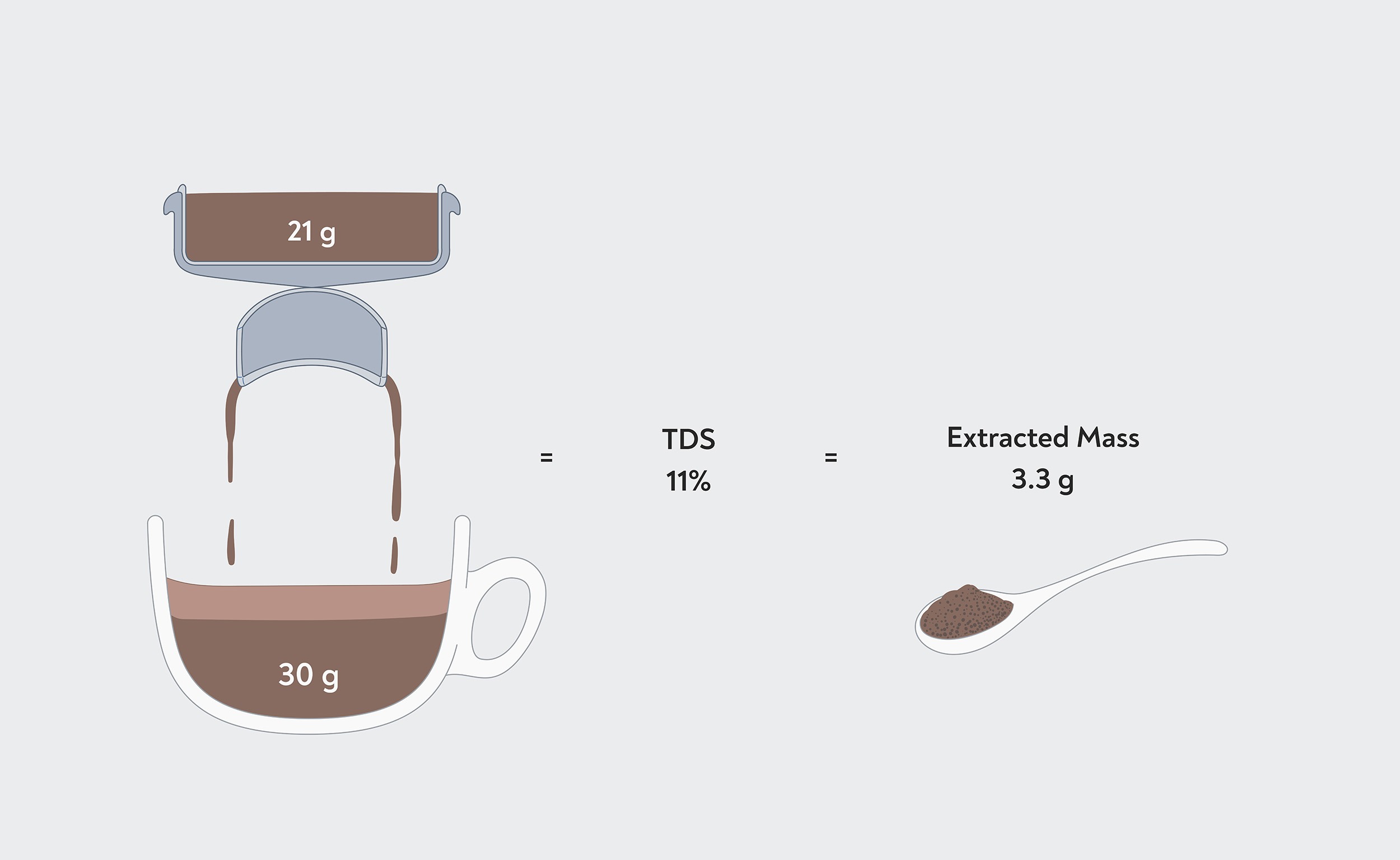 Conjectural 2003 winning espresso recipe. Same amount of coffee in 2003 but we estimate 33% less extracted mass.
Conjectural 2003 winning espresso recipe. Same amount of coffee in 2003 but we estimate 33% less extracted mass.
Espresso in 2013
I just had a look at my espresso journal from eleven years back, the exact halfway point between Paul’s 2003 performance and Mikael’s and what shocks me is how small the shots were that we were pulling, and how low the extraction yields were even then.
For the month of May 2013, the average dose was 18 grams, the average brew ratio was 1:1.7 and the average extraction yield was a diminutive 18.6 percent. These days I’m disappointed if I get less than 22 percent and I use at least 50% more water than I did in 2013. If you were to shake your espresso grinds, you’d be disappointed if you didn’t get over 23% on a 1:2.5 recipe like Mikael’s. The average extracted mass that month for a double was 3.35 grams. That’s almost the same as our estimates for Paul’s 2003 shots.
Under extraction was rife in 2013. That, compounded by the predominance of underdevelopment in roasting in that period, meant that if you made a ristretto from any Third Wave roaster in 2013, it would almost certainly have tasted like sour peanuts.
You probably remember the 2022 WBC winner, Anthony Douglas using cryodesiccated milk in 2022? Rotovap milk featured strongly in 2023 as did cow/coconut blends, à la Patrick Rolf. (With a rotary evaporator you can boil your milk at say 20°C, which allows you to concentrate its flavour at a temperature that won’t denature any proteins or degrade the flavour of the milk). We’re only two comps into a new set of rules for the World Barista Championships that allows baristas to blend and alter the milks they use and already European Coffee Trip have coined the term ‘competition milk’.
Anthony Douglas onstage during the finals of the 2022 WBC in Melbourne. Anthony is using our first ever prototype of the AutoComb.
Here’s where things become a little surprising. Mikael was pulling shots for his signature drink and milk drinks in a distinctly Paul Bassett-style. I couldn’t quite believe my ears when I heard this so I actually reached out to Mikeal to confirm. Here’s what he said:
“With the milk and sig bev shots, I did pull boomer shots 😜 20g in 30g out. So only 15g per cup. The roasting for that coffee was pretty developed (agtron 65–68) so it was quite soluble. I wanted a more concentrated shot as well for the sweeter m*lk blend that I had so it worked that way. I think with that type of Colombian coffee, you get more flavour balance compared to a longer brew ratio anyways.”
That’s a 1:1.5 ratio, something we haven’t really seen for a generation in that competition. But as Mikael points out, he was creating something quite different with his milk blending: 60% dairy, 20% cashew milk, and 20% oat milk, all evaporated to an 80% concentration. He’s made a strongish 1:3 ratio of espresso and milk — think cortado — and managed to achieve in his own words,
“flavours of peach liqueur, cantaloupe, and marzipan, with a coating mouthfeel and a lingering aftertaste of chocolate truffle.”
If you can get those flavours with a boomer shot, then maybe it is time to bring back the rizz?
If ristretto shots have become viable again in 2024, or even preferred when combined with ‘competition milk’ then we can speculate that it’s a combination of good roast development; improved grinder design; a move towards higher brew-water temperatures (Mikael’s set his brew boiler temp to 96°C); and better grind size distribution that we can thank for that. Mikael was using an AutoComb too — just saying.


